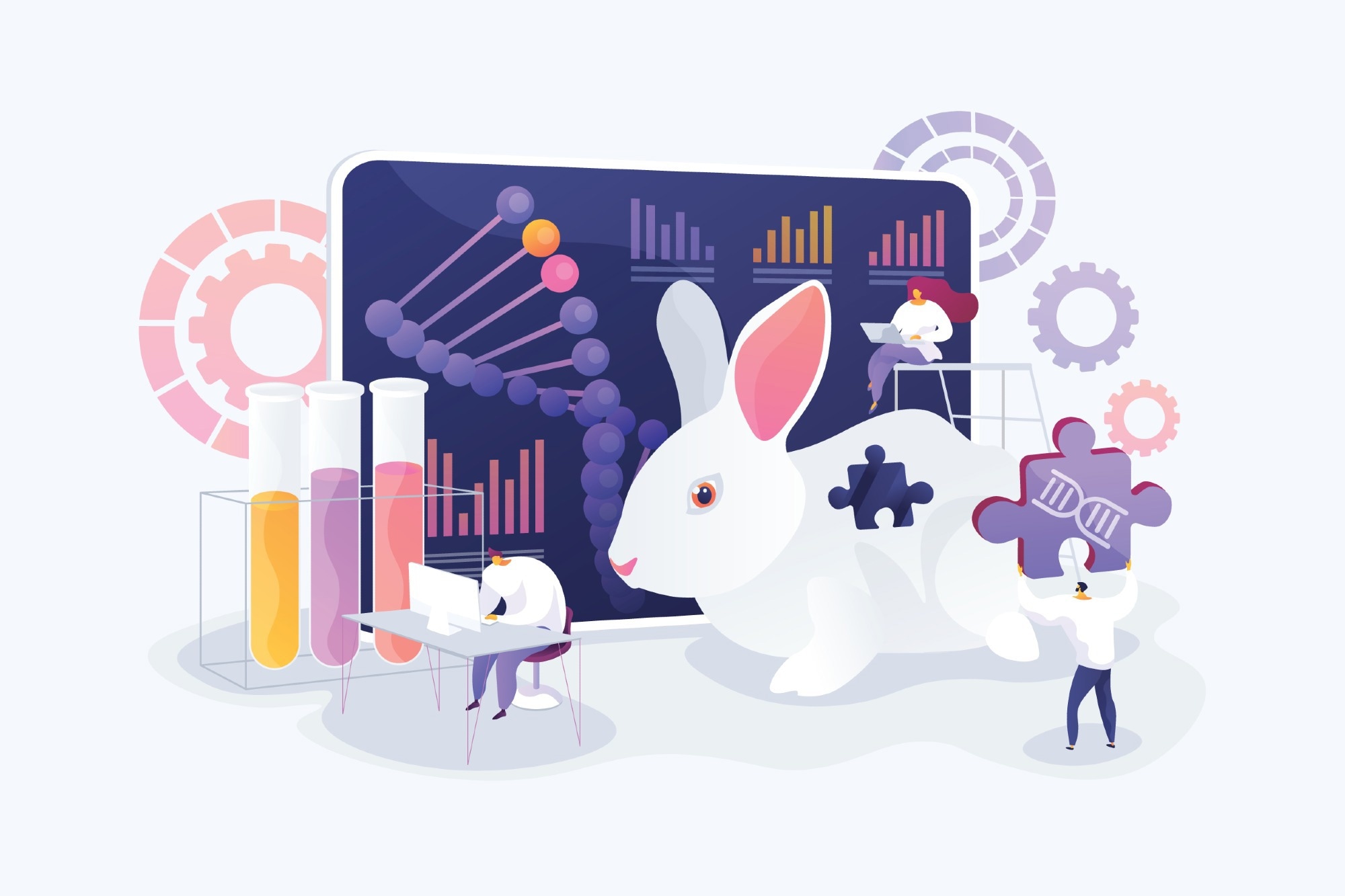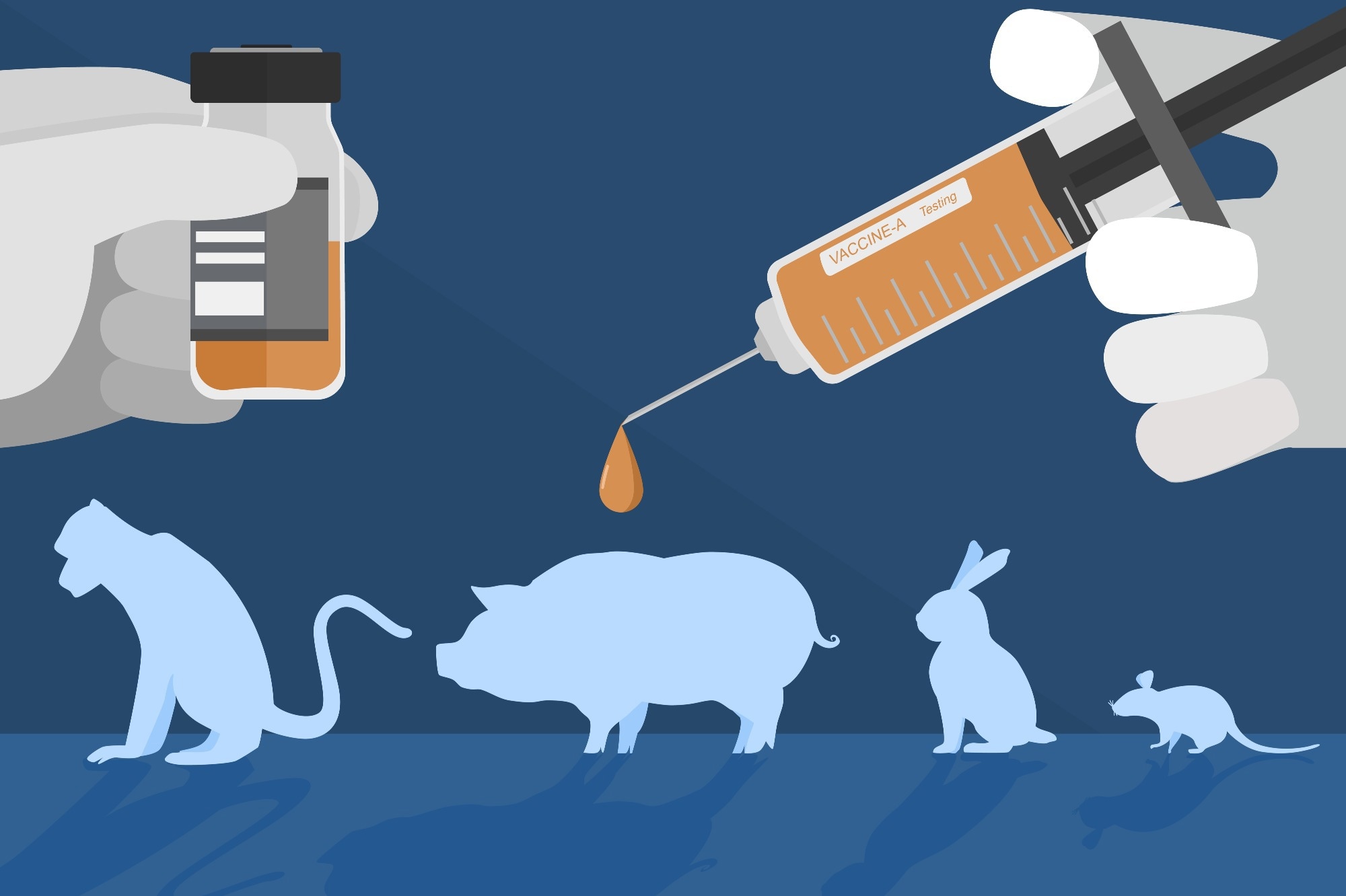Introduction
The Key Role of Animal Research
1. Animal Research and Basic Biology
2. Animal Research and Human Disease
3. Animal Research and Treatment Strategies
4. Mandatory Animal Trials
Historical Role of Animal Research
Issues with Animal Research
Poor Correlation
Misleading Results
New Directions
Productive Use of Funding
Using Relevant Models
Conclusion
References
Further Reading
Animal research is at the center of much debate, often acrimonious, largely due to the increased rights afforded to animals in recent times, at least within developed countries. At few points in human history have animals been protected across the spectrum as widely as today, even though in ancient times animals were often linked with sacred beliefs in many places.

Animal research. Image Credit: Visual Generation/Shutterstock.com
The key role of animal research
It is indisputable that modern biomedical research has made it possible for more people to live longer and with greater health and comfort than ever before. For instance, 150 years ago, tuberculosis killed more people than most other causes. A quarter of the population died before they turned 25 years; half died before they crossed 50, from bouts of typhoid, dysentery, and scarlet fever.
Fast forward to today, when cancer and cardiovascular disease – both diseases with their onset after middle age – account for the largest number of deaths in the USA. Both these are lifestyle diseases and their onset is with old age. Almost all Americans live to 25; over 90% cross 50.
Improved nutrition and hygiene have made infectious diseases (IDs) much rarer. Yet, this alone does not explain how polio, diphtheria and rheumatic fever have become so uncommon or even eliminated, in some cases. The answer is animal research, which plays multiple roles.
1. Animal research and basic biology
In basic animal research, animals are used to study biological processes, at the systems and cellular level. Understanding normal physiology helps identify abnormal processes much more easily.
2. Animal research and human disease
Animal research helped identify the pathogens responsible for a variety of diseases. For instance, diabetic dogs were instrumental in the discovery of the crucial metabolic hormone insulin by Banting and Best. Many Nobel-winning medical discoveries could not have been made without the use of animal research.
Mice comprise 95% of animal models because their physiology and genetic composition are close to those of humans. Other animals are also used in specific situations.
Rabbits, for instance, develop atherosclerosis, emphysema and the congenital spinal deformity called spina bifida. And dogs develop cancer, cataracts, diabetes, and coagulation disorders like hemophilia.
Non-human primates (NHPs) are key to certain types of research, but endangered species are rarely used. Monkeys make up about a quarter of the animals used in research.
3. Animal research and treatment strategies
Animal experiments also helped develop vaccines and antibiotics. When in vitro results are promising, they are extended to animal models to help make sure that no unexpected dangers are being overlooked following their use in humans.
A host of medical advances are a result of animal research, including hormones, anti-hypertensive drugs, treatments for blood disease and trauma associated with shock. The American Medical Association claims, “Virtually every advance in medical science in the 20th century, from antibiotics and vaccines to antidepressant drugs and organ transplants, has been achieved either directly or indirectly through the use of animals in laboratory experiments.”
Again, every Nobel Prize in Medicine over the last 30 years has been based on science discovered using animal research. Less than one in five Nobel-winning contributions were made without animal experimentation.
Animal research continues to be central in understanding and developing solutions for many chronic problems that remain widespread today. They include Alzheimer’s disease, Parkinson’s disease, cancer, atherosclerosis and diabetes. Mental illness, cardiovascular illness, arthritis and injuries caused by trauma all remain to be explored more comprehensively.
4. Mandatory animal trials
Currently, all in vitro and in vivo testing of a potential treatment or prophylactic must be followed by testing in a suitable animal model, without which human clinical trials cannot begin.
Historical role of animal research
Two history-making achievements that were built on the basis of animal experimentation include smallpox and polio vaccines. These were instrumental in eradicating two of the greatest scourges of humankind.
Animal research led to the identification of malaria as the cause of the “ague”; the treatment for vitamin deficiency diseases like rickets and beriberi; and a plethora of vaccines against deadly and previously untreatable conditions including the plague, cholera, typhoid, meningitis, and rabies – as well as more commonly used tetanus, diphtheria and pertussis vaccines.
The discovery of local and general anesthetics, blood transfusions, insulin, and the use of heparin as an anticoagulant, all owe much to animal research. So does chemotherapy for leukemia, breast and prostate cancer, and drugs to treat ulcers, human immunodeficiency virus (HIV), type 2 diabetes and migraine.
Penicillin, the magic bullet of the post-World War 2 era; the discovery of the Rhesus factor, key to safe blood transfusion; the development of renal dialysis and transplantation; the cardiac pacemaker; heart valve repair and replacement; and the heart-lung machine, are all the results of animal experimentation, and could not, ethically, have been attempted on human subjects otherwise.
Turnng to imaging technology, the development of computerized tomography (CT) and MRI scanning was based on animal trials. They have revolutionized the ability to diagnose a host of medical illnesses at far greater speeds and accuracy.
Over the last two decades, gene therapy has become a possibility due to animal trials. Currently, it is being tested over a multitude of genetic diseases such as muscular dystrophy and cystic fibrosis.
Issues with animal research
Poor correlation
Animal physiology and pharmacokinetics do not mirror human processes perfectly, and animal models of disease are often not faithful representations of human pathophysiology. This must be kept in mind by researchers.
This is particularly relevant because laboratory animals are kept under conditions very different, and often far more stressful than, natural conditions. This confounds experimental conditions because the results are affected by baseline stress in the animals.
Misleading results
Moreover, animal experiments may give a false sense of safety, as in the notorious thalidomide study; or they may falsely indicate that a drug lead is ineffective. Laboratory environments, the animal strains used, and the testing equipment all vary, as do the anatomy, physiology, genetic expression, disease phenotype and pathophysiology of the animals. These have been demonstrated to falsify, or at least produce significant differences in, test results across laboratories.
This is partly responsible for the >90% failure rate of drugs that show preclinical success, including in advanced animal experiments, when tested in humans. This has not been shown to be addressed by inserting human genes; using non-human primates (NHPs), with their close genetic and physiologic similarity to humans; or standardizing laboratory protocols.
The fact is that thousands of clinical trials based on good animal outcomes when treated with drugs or vaccines have shown no evidence of benefit, or worse, have potentially or actually harmed human volunteers.
One striking example is the early clinical trial involving a lead drug, TGN 1412, shown to dampen inflammation in mice, rabbits and NHPs. When this was given to human volunteers, every individual immediately developed life-threatening cytokine storm and multi-organ failure.
Conversely, some drugs, including, notably, tamoxifen, would never have made it into the market if they had been known to produce liver tumors in rats. This fact was, however, only revealed after the safety of the drug for humans had been proven for years in clinical practice.
One scientist concludes, “The bottom line is that animal experiments, no matter the species used or the type of disease research undertaken, are highly unreliable—and they have too little predictive value to justify the resultant risks of harm for humans.”

Vaccine testing on animals. Image Credit: Hugethank/Shutterstock.com
New directions
As far back as 1959, William Russell and Rex Burch discussed the need to replace animal testing with other methods, reduce the number of animals used and refine animal tests to minimize animal suffering.
Productive use of funding
In today’s scientific arena, there are multiple testing avenues to predict human response to a lead compound. These include in vitro cell assays and experiments, human organs grown artificially in the laboratory, organs on a chip, computational modeling studies, and 3D printing of human tissues, all of which are based on human biology and offer a glimpse into the response of a tissue or organ to a drug, rather than a single cell.
This raises the question as to whether precious funds that could be used to investigate these potentially invaluable research pathways are being diverted unnecessarily to pay for often unreliable and non-predictive animal experiments.
Using relevant models
Toxicity tests in animals are exemplified by the LD50 (50% lethality dose), where the dose capable of killing half the animals is reached. Again, the IC50 (50% inhibitory concentration), was formerly carried out in animals.
Some toxicity tests could be misleading, like the Draize test, observing the effect of a compound on the skin or eye of a rabbit. Yet, for lack of a better, it is still in use. Tests like the EpiSkin® were recently approved, and use small human skin samples.
Such tests can be substituted by in vitro assays, using human cells, which generate more directly relevant results compared to results from animals.
Drug pharmacokinetic data can be obtained only from animal research, and this cannot be replicated in vitro. This is because the drug’s interactions with a complex living system are very different from those occurring with a cell layer in vitro, and go far beyond what can be modeled, even if all of them were known – which is not the case.
At the same time, new in vitro tests are required to ensure that unpleasant and dangerous surprises do not occur when compounds act very differently in humans compared to the animals in which they were tested. This knowledge makes animal tests useless for safety and toxicity testing.
Conclusion
Researchers urge that we “stop relying on tests that don’t work”, i.e., animal tests, and “rely instead on numerous recently developed testing techniques and diagnostic methods focused on humans rather than animals.”
There is an urgent need to develop these methods into reliable and reproducible tests, so that unnecessary animal testing can be reduced or eliminated as appropriate. This is recognized by current laws in many European countries, that allow for animal experiments only in specific situations, subject to stringent regulations for animal use and care.
References
- The Importance of Animal Research (2020). https://www.nabr.org/biomedical-research/importance-biomedical-research. Accessed on July 16, 2022.
- Why Animals are Used. https://www2.nau.edu/gaud/bio301/content/whyanm.htm
- Rogers, K. (2022). Scientific Alternatives to Animal Testing. https://www.britannica.com/explore/savingearth/scientific-alternatives-to-animal-testing-a-progress-report. Accessed on July 16, 2022.
- Research Using Animals: An Overview (2022). https://www.ox.ac.uk/news-and-events/animal-research/research-using-animals-an-overview. Accessed on July 16, 2022.
- Akhtar, A. (2015). The Flaws and Human Harms of Animal Experimentation. Cambridge Quarterly of Healthcare Ethics. https://doi.org/10.1017%2FS0963180115000079. https://www.ncbi.nlm.nih.gov/pmc/articles/PMC4594046/. Accessed on July 14, 2022.
- Allen, A. (2006). Of Mice or Men. Slate. https://slate.com/technology/2006/06/does-animal-testing-work.html. Accessed on July 14, 2022.
- Attarwala, H. (2010). TGN1412: From Discovery to Disaster. Journal of Young Pharmacology. https://doi.org/10.4103%2F0975-1483.66810. https://www.ncbi.nlm.nih.gov/pmc/articles/PMC2964774/. Accessed on July 14, 2022.
- Human health timeline (2022). https://www.understandinganimalresearch.org.uk/why/human-health-timeline. Accessed on July 16, 2022.
Further Reading
Last Updated: Aug 4, 2022